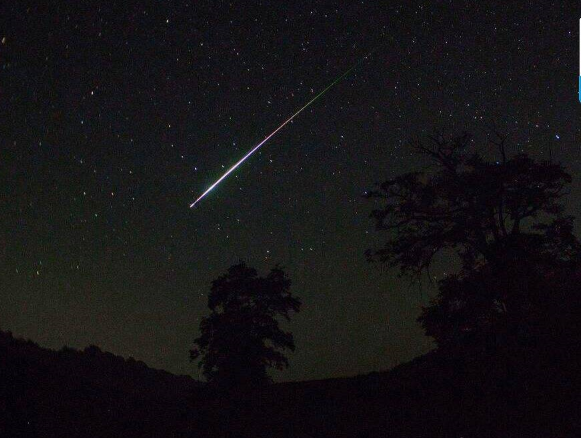Context:
It is that time of the year when the universe puts up its easiest-to-view meteor shower, the Geminids.

Relevance:
GS I: Geography
Dimensions of the Article:
- What causes meteor showers?
- What makes the Geminids unique?
- Why are they called Geminids?
What causes meteor showers?
- Meteors are usually fragments of comets. As they enter the Earth’s atmosphere at high speed, they burn up, creating a spectacular “shower”.
- According to NASA, “Meteors come from leftover comet particles and bits from asteroids. When these objects come around the Sun, they leave a dusty trail behind them. Every year Earth passes through these debris trails, which allows the bits to collide with our atmosphere where they disintegrate to create fiery and colorful streaks in the sky.”
What makes the Geminids unique?
- NASA describes the Geminids as “one of the best and most reliable annual meteor showers”.
- If their peak coincides with the new moon, and if the weather is clear, the Geminids can produce approximately 100-150 meteors per hour for viewing.
- This year however, the moon is bright, and so only 30-40 meteors per hour will be visible in the Northern Hemisphere.
- But the Geminids are so bright that this should still be a good show
- The Geminids are unique because unlike most meteor showers, they originate not from a comet, but from an asteroid, the 3200 Phaethon.
3200 Phaethon:
- The 3200 Phaethon was discovered on October 11, 1983.
- It is named after the Greek mythology character Phaethon, son of the Sun God Helios.
- It takes 1.4 years to complete one round of the Sun.
- As the 3200 Phaethon moves close to the Sun while orbiting it, the rocks on its surface heat up and break off. When the Earth passes through the trail of this debris, the Geminids are caused.
Why are they called Geminids?
- That comes from the constellation Gemini, from whose location in the sky the meteor shower appears to originate.
- The constellation for which a meteor shower is named only serves to aid viewers in determining which shower they are viewing on a given night.
- The constellation is not the source of the meteors.
- Also, you should not look only to the constellation of Gemini to view the Geminids – they are visible throughout the night sky.
-Source: Indian Express





